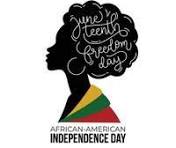Friendships for students in elementary, middle school, and high school are important. But, is social media and our high tech society preventing children from forming friendships outside of school? Researchers question if social media enable children to become more connected with friends. Or, if the quality of the interactions are diminished because children lack face-to-face interaction.

Childhood friendships build trust that enable children to form adult relationships. Children today don’t seem to have close friends. They rarely see peers outside of school in a social atmosphere unless arranged by a parent. In order for social skills to develop, we must allow children to develop friendships outside of school. Moreover, these friendships are the key to a child’s sense of self-identity and emotional security. Friends model new skills and behaviors – good or bad. They provide a sense of security that children need to develop interdependent relationships with parents.
There are various levels of friendship. These change with the age of a child. However, it is beneficial for children to develop and manage friendships even when parents want to take matters in their own hands.
Elementary School Friendships
A school’s character education program focuses on building friendly relationships for students. Friends at this age become inseparable. They are deeply fulfilling. And, they are trusting.
Forming friendships is part of developing good character. In addition, relationships help students make good choices. However, middle school relationships are more complicated than preschool or elementary relationships. Preschoolers make friends with whomever they are with at the moment. Elementary children form bonds with children of whom they identify. Additionally, they must blend into a group at this age.
Middle School
Middle school is a difficult time for most children. It is challenging for many reasons. There are many changes both physically and mentally. Not to mention, academics become more difficult. And schedules fill up with activities. A single close friendship can ease the path through this time period.
At this age, many relationships result in broken hearts. As a result, middle schoolers feel abandoned and betrayed as friends move between old and new relationships. Parents and teachers must fight the urge to intervene. The mending will take place on its own time.
High School
Friends in high school usually remain lifelong friends. In the climate of school, classmates grow up together. They share the same experiences and social life. They build a foundation for which one can always return.
Don’t ignore the importance of friendships throughout all phases of school. Relationships are vital to every student’s wellbeing. They take time to develop. They help students to grow mentally year by year. In the same fashion, students learn from each other by communicating both face-to-face and with social media. Friends provide each other assistance through tough times – family problems, divorce and broken hearts. They can even change their value system. Most important, students must understand themselves to grow into responsible adults.
School counselors and educators are available to help students that are shy to make friends. There are many strategies and books available to use to help students form relationships. So, keep children in touch with other children. Face-to-face interactions are important.




